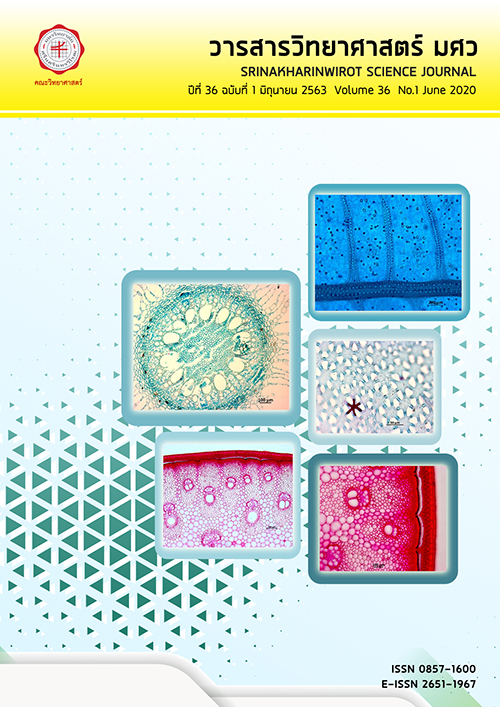Selecting Temperature for Screening Heat Tolerance in ‘Tavee 60’ Chili Seedlings
Keywords:
Capsicum annuum L., Heat tolerance, Leaf temperature, Chlorophyll fluorescenceAbstract
ABSTRACT Crop yield has been affected by unfavorable growth conditions. This study aimed to find temperature for screening heat-tolerate chili pepper (Capsicum annuum) mutated by gamma radiation. Two-month-old seedlings were grown in the growth chamber at four temperature treatments as 27 (control), 34, 36 and 40 oC for 7 days. Leaf temperature (LT), non-photochemical quenching (qN), photochemical efficiency of PSII (Fv/Fm) and electron transport rate (ETR) were determined. The results showed that leaf temperature of control plants was lower than other treatments. The qN tended to increase according to the higher temperature treatments. Fv/Fm ratio and ETR of seedlings under 40 oC treatment were lower than the others. In addition, under 40 oC, seedlings displayed the injury symptom after 4 days and died after 7 days. These levels of injury symptoms lead to the new qualitative parameter for future work called ‘injury index’. In conclusion, the seedlings at 40 oC treatment were different from the control based on Fv/Fm. In order to get the new improved cultivar, the temperature at 40 oC and Fv/Fm were selected for the future heat-tolerant screening of chili pepper seedlings mutated by gamma irradiation.Downloads
Download data is not yet available.
Downloads
Published
2020-06-26
How to Cite
Masepan, N., Sonjaroon, W., Chusreeaeom, K., Suwanwong, S., & Khamsuk, O. (2020). Selecting Temperature for Screening Heat Tolerance in ‘Tavee 60’ Chili Seedlings. Science Essence Journal, 36(1), 63–74. Retrieved from https://ejournals.swu.ac.th/index.php/sej/article/view/11169
Issue
Section
พฤกษศาสตร์แห่งประเทศไทย ครั้งที่ 13(ปิดรับ)








